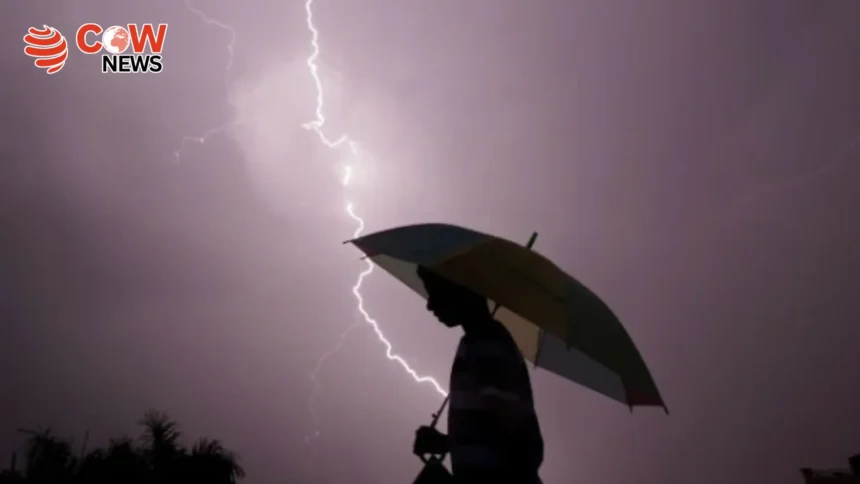Patna, India( The COW News Digital)Severe weather conditions in the Indian state of Bihar have resulted in tragic losses, with lightning strikes claiming the lives of 19 people and many others injured over the past 24 hours. The region continues to experience heavy rains accompanied by frequent lightning, which authorities warn may persist until July 23.
According to local media reports, multiple incidents of lightning strikes have been recorded across several districts including Patna, Banka, Vaishali, Sheikhpura, Nawada, Jehanabad, Aurangabad, Jamui, Samastipur, and Nalanda. These strikes have caused significant casualties, predominantly in rural and agricultural areas, where open fields and lack of shelter increase vulnerability.
The Chief Minister of Bihar, Nitish Kumar, expressed deep sorrow over the fatalities and announced a compensation package of INR 400,000 (approximately $4,800) for the families of each deceased. He also urged residents to take necessary precautions during the ongoing adverse weather conditions to minimize further loss of life.
Meteorological department forecasts suggest that intense rainfall and lightning activity will continue between July 17 and July 23. Alongside Bihar, states such as Madhya Pradesh, Vidarbha, and Chhattisgarh are also experiencing persistent monsoon rains, which have led to widespread flooding and infrastructure damage in some areas.
The National Green Tribunal (NGT), India’s environmental court, has raised concerns regarding the increasing frequency of lightning incidents, particularly linking them to deforestation practices in Bihar. Reports indicate that large-scale cutting of palm trees in the region might be contributing to altered local microclimates, intensifying thunderstorm activity.
Since 2016, over 2,000 people in India have reportedly died from lightning strikes, highlighting the urgent need for improved disaster preparedness and public awareness programs.
Officials are deploying emergency response teams and increasing surveillance to provide timely warnings and assistance to vulnerable communities. Additionally, public advisories emphasize the importance of seeking shelter indoors during thunderstorms, avoiding open fields, and staying away from tall trees and metal structures.
The Bihar government and central authorities continue to monitor the situation closely, coordinating relief efforts and infrastructural repairs to mitigate the ongoing impact of the monsoon season.
This tragic spate of lightning-related deaths underscores the broader challenges faced by Indian states during the monsoon and the critical need for effective weather forecasting and community education to save lives.







